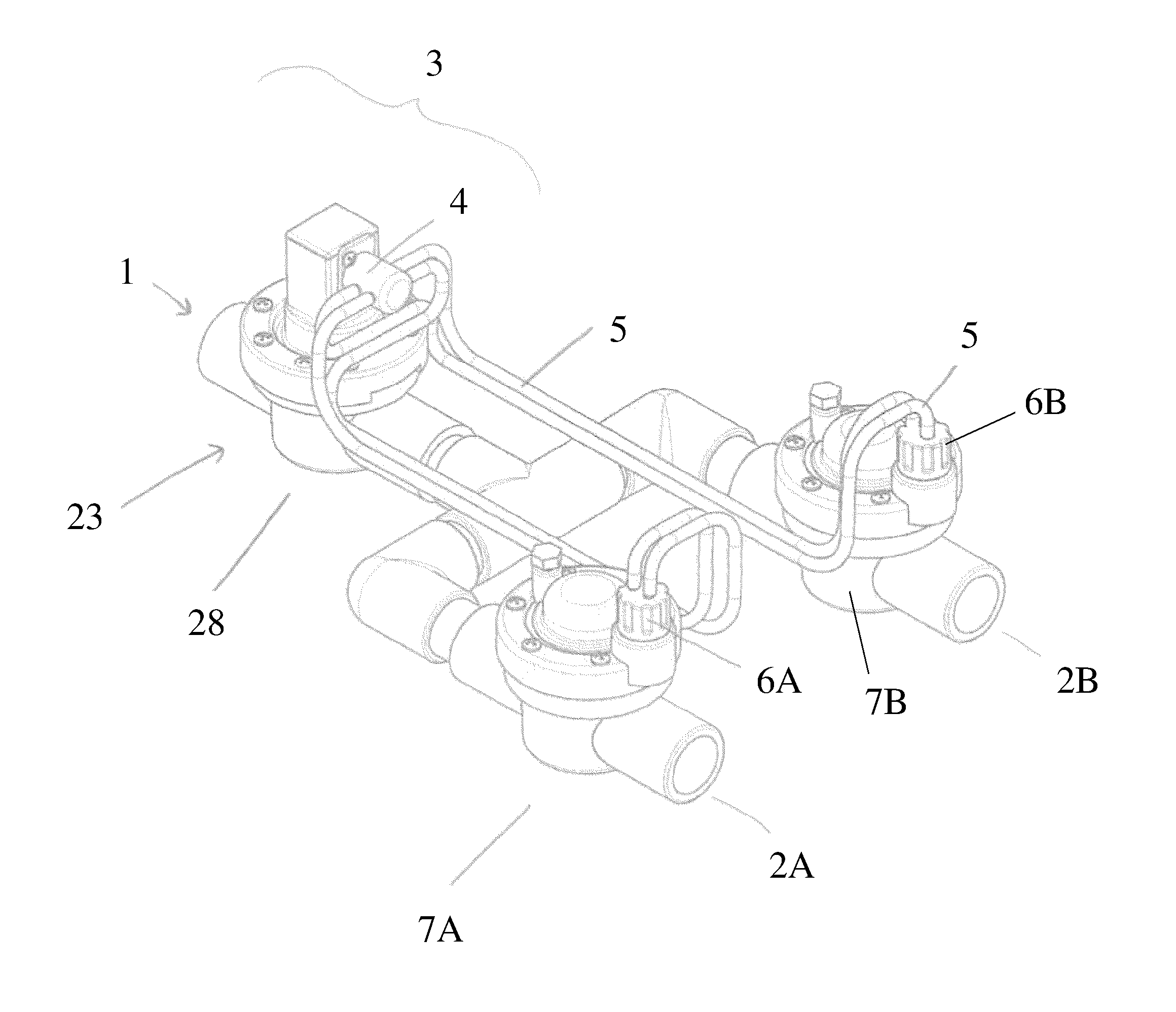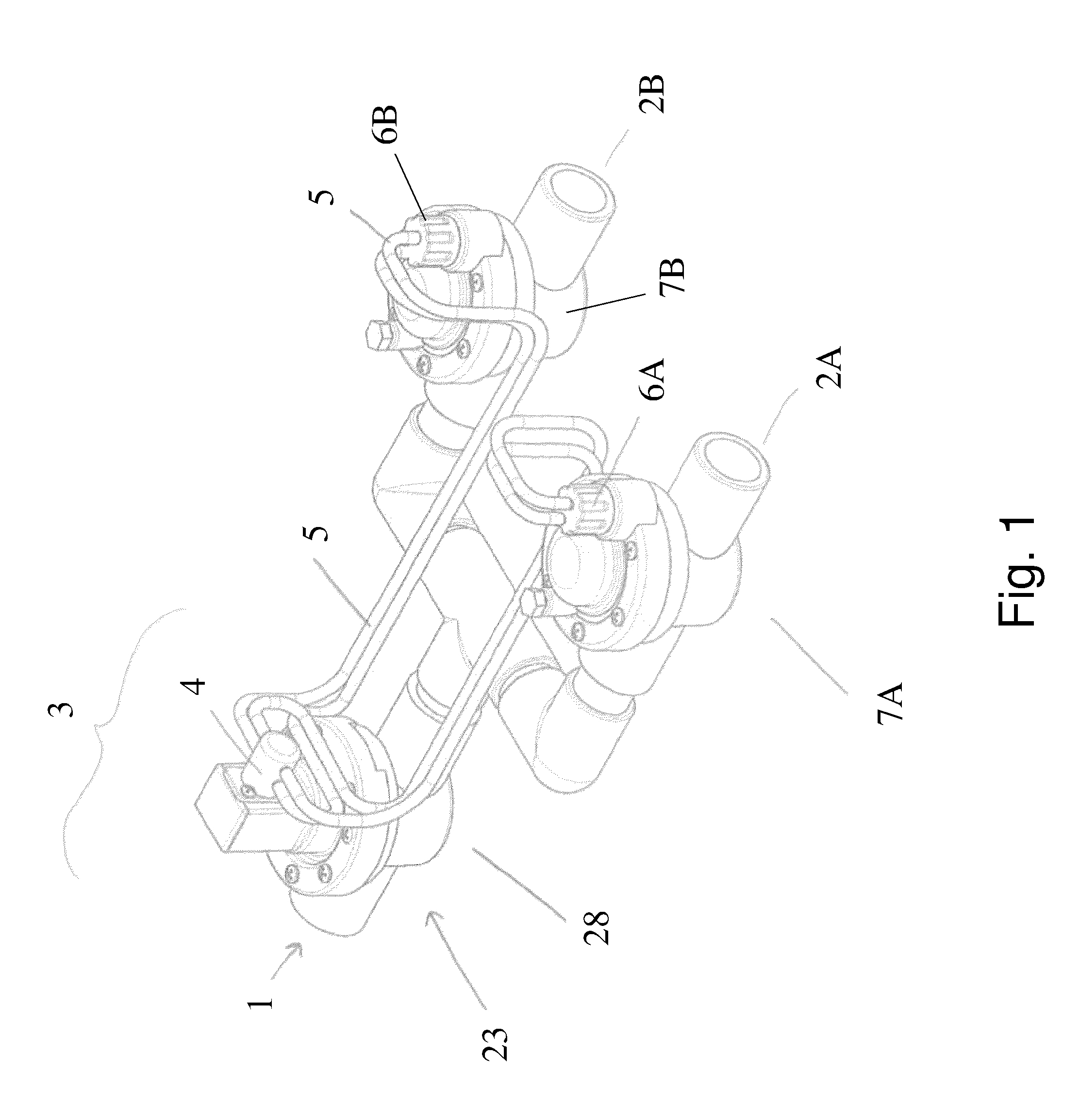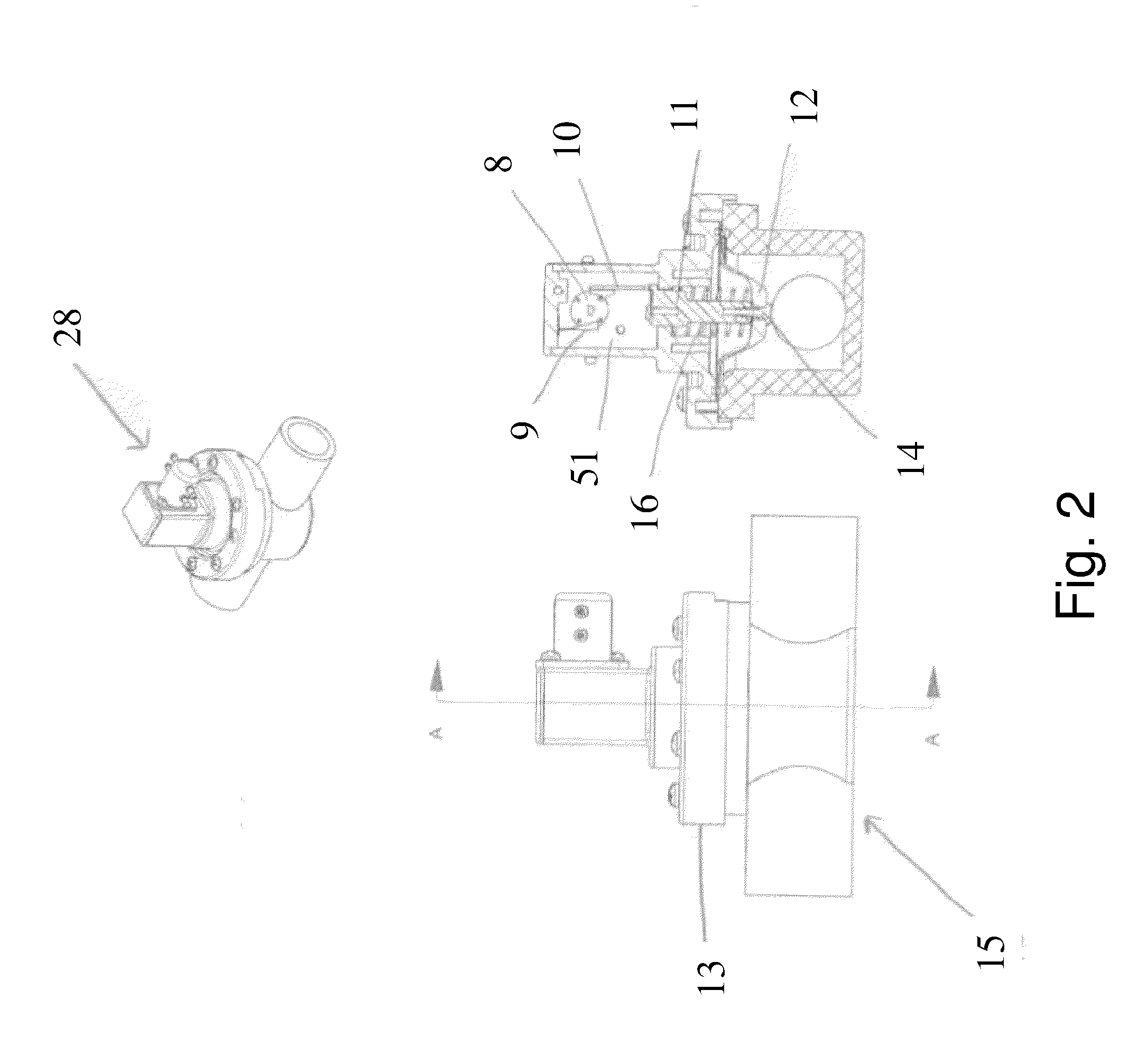Fluid activated flow control apparatus
a flow control and fluid technology, applied in water supply installation, process and machine control, instruments, etc., can solve the problems of inability to expand the flow in the pipeline, difficult expansion of the fluid delivery coverage, and high cost, and add new pipe runs that have the added difficulty of trenching and cutting or circumventing pavement,
- Summary
- Abstract
- Description
- Claims
- Application Information
AI Technical Summary
Benefits of technology
Problems solved by technology
Method used
Image
Examples
first example embodiment
[0322]The first example operating environment illustrates the irrigation of a field using a single actuator without manual labor or electrical power beyond the central pump and master valve, see FIG. 11.
[0323]FIG. 11 illustrates the operating environment of a first example fluid activated actuator system. The operating environment consists of a pressurized water source (e.g., a water pump) 11000. The pressurized water is delivered using conventional water transport methods including, for example PVC pipes, to a master valve 11100. The master valve 11100, for example, is a conventional diaphragm valve. Attached to the master valve 11100 is a conventional valve controller 11200. The valve controller actuates the master valve 11100 into a closed or open position based upon a user configurable timing schedule. When the master valve 11100 is actuated into the on / open position by the controller 11200, pressurized fluid is released from the water source 11000 into the main line 11300. In t...
second example embodiment
[0378]The second example operating environment, similar to the first example, illustrates the irrigation of a field using a single actuator without manual labor or electrical power beyond the central pump and master valve. In this example, as compared to the first example, the sequencing valve actuator is mounted in the solenoid position in one of the diaphragm valves in the operating system. This fluid activated actuator configuration reduces the number of parts in the system, is simpler to install, and requires no bore hole in the main line.
[0379]FIG. 39 illustrates the operating environment of a second example fluid activated actuator system. The operating environment consists of a pressurized water source (e.g., a water pump) 11000. The pressurized water is delivered using conventional water transport methods including, for example PVC pipes, to a master valve 11100. The master valve 11100, for example, is a conventional diaphragm valve. Attached to the master valve 11100 is a c...
third example embodiment
[0453]The third example operating environment, similar to the first and second example, illustrates the irrigation of a field using multiple fluid activated actuators without manual labor or electrical power beyond the central pump and master valve. In this example, as compared to the first and second example, the fluid activated valve actuator (labeled a lockstep actuator) is mounted in the solenoid position in each of the diaphragm valves in the operating system see FIG. 20 and FIG. 24. The lockstep actuator further simplifies the operating environment for a user but is designed using the same general concepts and principles as the actuators of examples 1 and 2. In particular, the lockstep actuators do not require connective tubing between the actuator and associated or slaved diaphragm valves.
[0454]FIG. 23 illustrates the operating environment of a third example fluid activated actuator system. The operating environment consists of a pressurized water source (e.g., a water pump) ...
PUM
 Login to View More
Login to View More Abstract
Description
Claims
Application Information
 Login to View More
Login to View More - R&D
- Intellectual Property
- Life Sciences
- Materials
- Tech Scout
- Unparalleled Data Quality
- Higher Quality Content
- 60% Fewer Hallucinations
Browse by: Latest US Patents, China's latest patents, Technical Efficacy Thesaurus, Application Domain, Technology Topic, Popular Technical Reports.
© 2025 PatSnap. All rights reserved.Legal|Privacy policy|Modern Slavery Act Transparency Statement|Sitemap|About US| Contact US: help@patsnap.com



